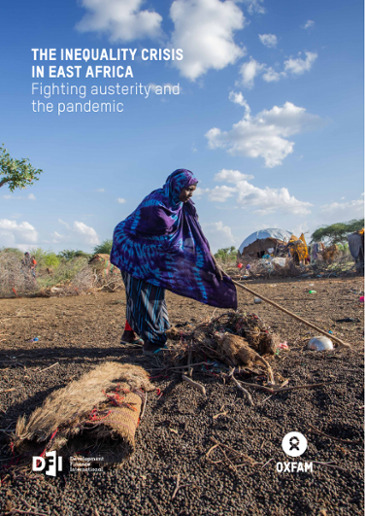
The COVID-19 pandemic has pushed millions into poverty in East Africa, and worsened inequality. The economic crisis continues, due to the obscene global vaccine inequality, which means that only 4% of East African citizens had been fully vaccinated against COVID-19, compared with 71% in high-income countries by mid-January2022.
Many East African governments were already hamstrung by high debt and budget deficits before the pandemic, preventing them from responding with large recovery programmes. Other governments did increase spending, but five are now forecasting major budget cuts for 2022–26. These cuts will stop them combating the increases in poverty and inequality that have resulted from COVID-19.
However, building back during and after the pandemic offers East African governments a once-in-a-generation opportunity to do what their citizens want: make their economic systems fairer by increasing taxes on wealthy and large corporations, boost public spending (especially on healthcare, education and social protection), and improving workers’ rights. With external support, including through comprehensive debt relief and more aid, they can reduce inequality drastically and eliminate extreme poverty by 2030.